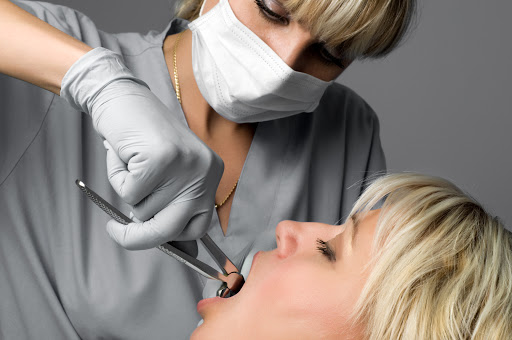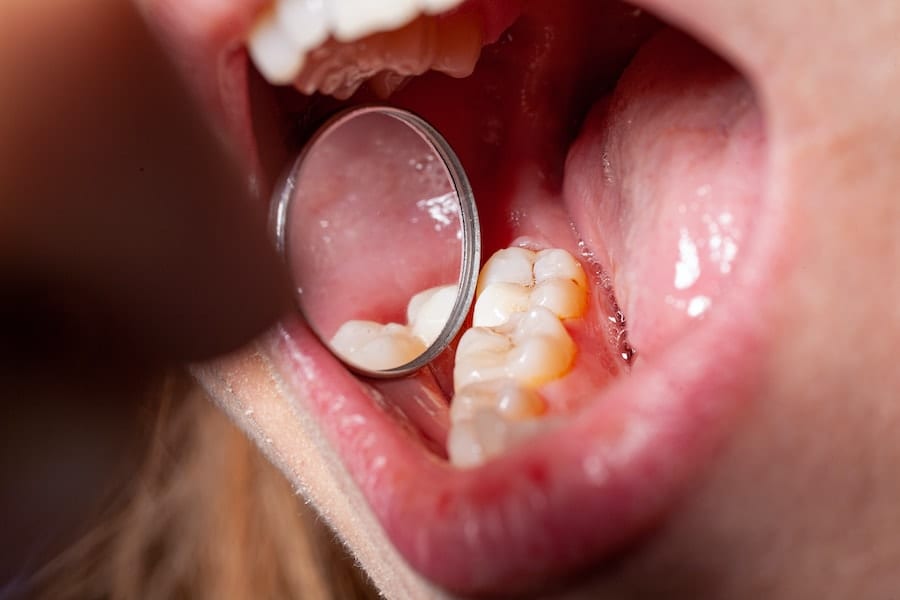Last Updated on: 4th December 2024, 04:25 pm
The extraction of a wisdom tooth is a situation that generates tension before the surgical procedure. After surgery, some people are concerned if days after the intervention, the wisdom tooth hole does not close. But that does not mean that it will never fully heal. In each patient, healing has its own rhythm.
Here you will find information about the steps prior to the extraction of the wisdom teeth, the healing process, the risk factors, the aftercare needed to facilitate the tooth hole in healing properly, as well as the recovery time.
2 Types of Extraction and Their Management

There are two types of extraction of wisdom teeth:
- The simple type is performed on teeth that have already erupted through the gum tissue and are visible. This is applied even in cases of infection or severe caries.
- Surgical intervention is needed when the wisdom teeth do not erupt from the gums and or when the gums contain the remains of a visible tooth that has been fractured or cracked. This intervention is also used when in the course of a simple extraction, the piece breaks and fragments remain.
Wisdom tooth extraction leaves a hole in the gums, where the tooth used to be. How long does it take for the hole to close after wisdom tooth extraction? We will provide the answer.
Suggestions if your Wisdom Tooth Hole does not close
- Avoid heavy meals the night before.
- Not smoking helps prevent cases of dry sockets.
- In cases of active infection, the dentist can prescribe antibiotic medications prior to extraction.
- Do not consume alcoholic beverages.
- On the day of surgery, clean your mouth with brushing and flossing.
- Inform the oral surgeon about the diseases that are present at the time of surgery, allergies, and medications being consumed.
The Healing Process
Swelling, bleeding, and tenderness after the procedure are normal, but they reduce over time.
24 hours after the intervention, a blood clot forms over the wisdom tooth hole. This helps keep the hole free of bacteria and food debris. It also contributes to the formation of bone tissue and the regeneration of the gums.
It is estimated that one week after the extraction, the hole will begin to close at the rate at of gum tissue regeneration. If there are stitches, at this stage of recovery, they may be removed.
Generally, the socket rebuilds gum tissue in two to four weeks. The wisdom tooth hole is closing, but a cleft is perceived. Bone tissue recovery takes an average time of six months to heal completely.
How to Speed up Recovery
In the post-operative stage, the most important thing is to reduce excessive bleeding. For this purpose, it is suggested:
- Biting a gauze that puts pressure on the extraction area, for an approximate time of 30 minutes.
- Do not spit or do mouthwash.
- Do not ingest drinks by suction.
- Avoid rubbing the tongue against the wound. This can irritate the gum.
- Do not eat food while the effect of anesthesia wears off.
- On the day of the intervention, it is recommended to sleep with the head elevated (lying down) to control bleeding.
- Do not use rinses until 24 hours after surgery.
- Brush the teeth 12 hours after the extraction.
- After 24 hours, gently brush the wound and rinse with warm salt water (Dilute a teaspoon of salt in a cup of water).
- In the first 24 hours, avoid physical exertion, strenuous activities, and heavy lifting.
- When consuming food, avoid letting it pass through the affected area.
- Eat soft foods and plenty of fluids.
- Cigarette smoking, vaping, or consumption of other nicotine products should be avoided.
- Do not take oral contraceptives
- Avoid grains, peanuts, and similar seeds. This can carry waste to the area of the intervention.
- Keep the intervention area clean of bacteria and food remains.
Risk Factors
When the blood clot does not form or dislodges, dry sockets occur, a condition that can be painful and interferes with the growth of bone tissue and the recovery of soft tissues.
A dry socket can also be caused by having infections in teeth near the extraction area.
Symptoms of Dry Sockets
- Intense pain, days after the extraction
- Partial or total loss of the blood clot. In this case, an empty and dry cavity appears.
- In the dental cavity, the bone becomes visible.
- The pain extends from the affected area to the ears, eyes or neck.
- Annoying odor in the mouth or bad breath
- Perceiving an unpleasant taste in the mouth.
When to Contact the Doctor
- In cases of dry sockets or infection
- Significant swelling three days after surgery.
- Intense pain.
- Tingling and palpitation in the operated area.
- presence of pus
- Heavy bleeding
- Fever
- Nasal discharge with blood or pus.
- Bad taste after making mouthwashes.
- Bone visible in the hole.
- After three days of the intervention, the socket does not have a blood clot or register a reduction.
When a dry socket occurs, it is possible that food particles are deposited in the hole. If this happens, the area o that did not close should be washed properly. However, sometimes people are not aware of this. Neglect can cause infection at the extraction site. It should be evaluated by a dentist or dental specialist, who will be able to determine if it is necessary to prescribe antibiotics, an antimicrobial, or an antiseptic mouthwash, with the purpose of eliminating the infection.
Therefore, it is important to follow the recommendations indicated by your dentist or the specialist who performed the surgery as to what should not be done. Home care is key to avoiding any complications.
Contact us
If you have any questions about this or other topics, you can contact us at Channel Islands Family Dental as well as our page on Facebook. We look forward to your visit and we will make a timely diagnosis. Our dentists in Oxnard, Santa Paula, Ventura, Newbury Park, and Port Hueneme will be able to guide you toward the best treatment to take care of your health and give you back your best smile.
Bibliography
1. Frey, Scott et al (nd) Wisdom teeth: How long does it take for gum tissue to close over an open socket? https://www.quora.com/Wisdom-Teeth-How-long-does-it-take-for-gum-tissue-to-close-over-an-open-socket
2. Mayo Clinic (nd). Dry socket. https://www.mayoclinic.org/diseases-conditions/dry-socket/symptoms-causes/syc-20354376#:~:text=Dry%20socket%20(alveolar%20osteitis)%20is,before%20the%20wound% 20has%20healed.
3. Sair Dental Group (2020). What would happen if my wisdom tooth hole never closed? https://www.sairdentalgroup.com/what-if-my-wisdom-tooth-hole-never-closed/
4. Whelan, Corey (2021). Tooth extraction recovery: How long does it take to close the hole? https://www.healthline.com/health/how-long-does-it-take-the-hole-to-close-after-tooth-extraction
5. Propdental Clinics (nd). What to do before and after an extraction. https://www.propdental.es/blog/odontologia/cuidados-antes-y-despues-de-una-exodontia/

















